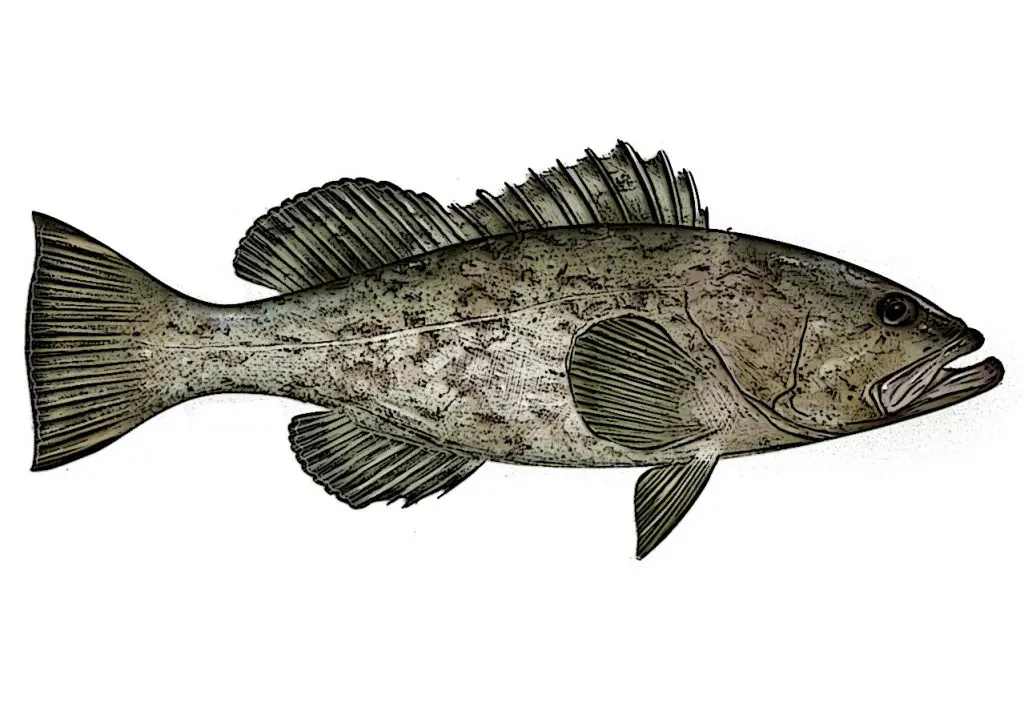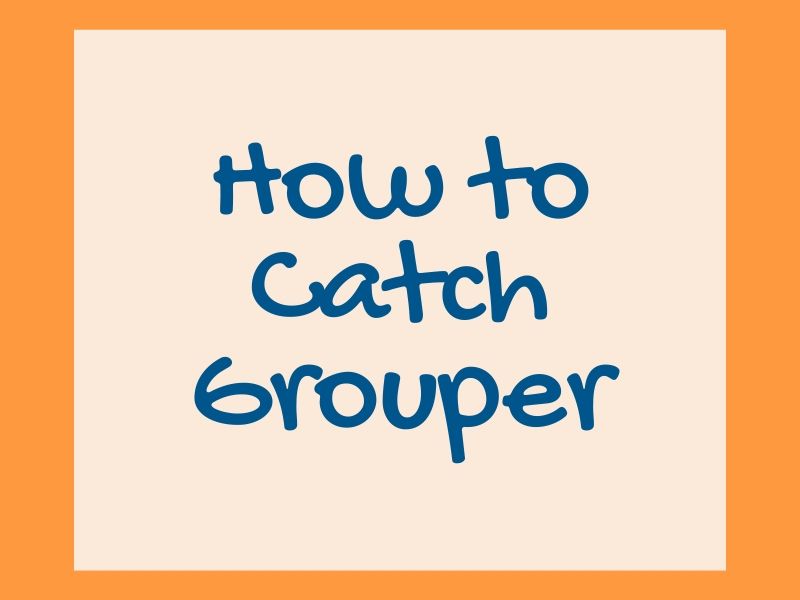Grouper are well known for putting up a good fight, while also being one of the better tasting fish you can catch. These reasons together are why they are a popular fish for anglers to target. If you’re targeting grouper on your next fishing trip, here we will cover how to identify grouper, where to catch them, their feeding habits, seasonal patterns, the equipment you need, and give a few additional tips to help you catch more grouper.
Grouper Identification
There are many different species of fish that are referred to as “grouper”. Usually they have a large body and mouth and can come in a variety of different colors depending on the specific kind of grouper. Generally, they do not have very many teeth.

In terms of size grouper can commonly be well over 3 feet in length and weigh upwards of 200lbs. Some types of grouper can grow to be over 8 feet long and weigh over 400lbs.
Where to Catch Grouper
Grouper are a saltwater fish that are commonly targeted in the southern regions of the United States and parts of South America. They can be caught both offshore and inshore, and tend to stay near structure.
If you’re offshore fishing for grouper, look for reefs and ledges where the grouper tend to congregate. If you’re fishing for grouper inshore or nearshore, look for them in shallow reef areas, bridges, or near docks.
What Do Grouper Eat?
Grouper commonly eat other fish, crustaceans, and octopuses. They use their powerful mouths to suck food in from a distance.
Seasonal Patterns
Fall
In the autumn grouper tend to stay in deeper waters until the weather starts to cool down in the late season. When the weather cools they will move to waters ranging from 50 to 100 feet deep. Fish for them offshore near reefs and ledges in the early fall. Later in fall look for reefs that are 50 to 100 feet deep.
Winter
In the winter months, grouper will move close inshore or just offshore. You can find them in estuaries near shipping channels or near shallow reefs. Look for them in waters ranging 30 to 60 feet deep.
Spring
As the water starts to warm up, grouper will move from the shallow waters to deeper waters. Look for them in waters around 50 to 100 feet deep near reefs and ledges. In reefs they will tend to hide in holes and other areas.
Summer
In the summertime grouper continue their migration into deeper cooler waters. They can migrate from just a few miles out, up to dozens of miles offshore depending on the area you are in. Look for waters deeper than 100 feet, sometimes upwards of 300 to 400 feet deep. Offshore reefs, ledges and wrecks are good spots to look.
Best Time to Catch Grouper
Grouper can be caught pretty successfully year-round. The colder winter months are a good time to catch them because they are closer to shore, however, feeding activity can be high during spring, which makes that a good opportunity to catch them as well.
Grouper Fishing Equipment Recommendations
Rods and Reel
When the grouper are closer to shore, spinning rods are a good choice. Stick with a heavy fast action rod around 6 to 7 feet in length. Try to use a reel that can handle between 50 and 100-pound test line
When you’re fishing deeper offshore waters, a conventional reel is the best choice. Around 7 feet in length with a low gear ratio. You need enough power to comfortably fish deeper waters where the grouper may be hiding.
Baits and Lures
Plugs
Diving plugs are the preferred lure for many grouper anglers. The best ones for catching grouper are made specifically for deep trolling over shallow reefs.
Spoons
In fall and winter, spoons can be a good choice for fishing inshore and near shallow reefs. The light that flashes of a shiny spoon resembles many of the shiny baitfish grouper are used to feeding on, which is one reason these can be so effective.
Soft Plastic Lures
Grouper can be readily caught on soft plastic lures that resemble baitfish. These kinds of lures are versatile and can be fished in a wide variety of different settings. Look for ones that mimic mullet or pinfish and move like natural fish. Fish them near shallow reefs or inshore near docks and other structure.
Live Bait
Live bait is always effective. Though you can also use chunks of dead bait productively when targeting grouper. Sardines are considered most effective by many anglers, but you can also use squid, pinfish, mullet, and other small fish.
Fishing Line
Monofilament line is generally used for catching grouper in waters up to 150 feet deep. It’s good for trolling and fishing shallower waters, but if you’re offshore fishing and going deep you will likely want a strong braided line. You can also use a fluorocarbon leader if desired.
Hooks
Circle hooks are the most widely used. Use around a size 8/0 to 9/0.
Tips to Catch More Grouper
Fish The Structure
Grouper are ambush predators. They like to remain hidden before attacking your food. This is why you need to fish near coral ledges, rock piles, and other structure where they will likely be hiding in.
Try Trolling
Trolling is becoming an increasingly popular way to catch grouper, and that’s because it is so effective. Troll over shallow reefs ranging from 20 to 50 feet deep. Typically you want your lure to be just over the bottom without getting hung up too often. If you’re trolling at the right level you will snag every so often, but that’s part of the process.
Chum the Water
Chumming is a tactic that definitely works for fishing grouper. Many anglers often use squid or sardines to get the fish into a feeding frenzy. Next time you’re bottom fishing, try chumming the waters first. This is likely to get any grouper hiding in holes out and readily biting your baits.
Related Posts
Snook Fishing Tips
How to Catch Lingcod
